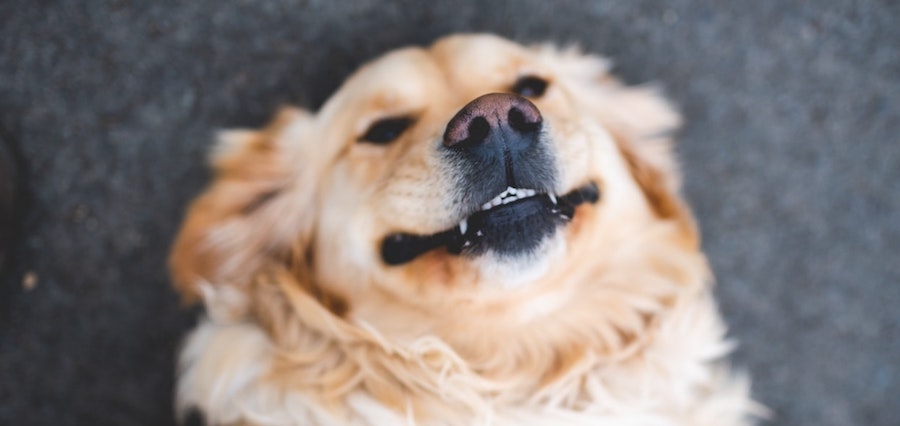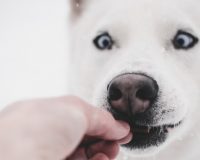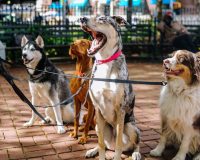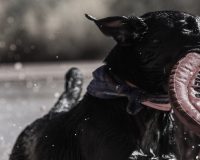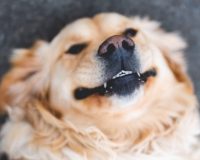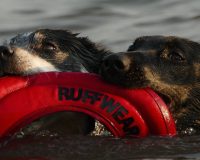Dogs are their own species and they have all the hard wiring that comes with it. They also have a unique language and communication style, which is efficient and consistent, species-wide.
Most pups live boring lives with humans because their species-appropriate needs aren’t met. Add to that, normal behaviours are often punished. But there are many solutions that greatly improve quality of life for both our species.
The first solution is to develop the necessary insight into canine needs and normal expression so that parents can do the basic tasks of interpreting and taking care of their dogs appropriately. Let’s unpack this.
Besides floppy, hilarious, cute factor, what are dogs?
Species hard wiring is fascinating. There is a lot going on behind the scenes that will surprise many.
In its simplest form, canine needs are to: sleep, explore, play, bond, eat, drink, excrete, and scavenge or hunt. Hunting is predatory and implies the search, chase, grab, hold, dissect and chew/eat behaviours.
Each of these needs has signals and expressions (behaviours). When one or more are suppressed, the need grows and must be expressed. Compare this to a dam system: without expression and satisfaction of a given need, its reservoir overflows. Each need must be expressed and satisfied.
The same is true with humans. When we fail to meet our own needs, we become frustrated and depressed until we wilt or act out. The parallels between our species, in terms of psychology, are often very remarkable.
The Top 13 List: Things To Know That Will Make You Happy
1. Although socialized dogs have a strong code among themselves, they are amoral about human valuables. Dogs do not think in terms of right and wrong or attach moral value to certain things over others, in the way humans do, without motivation in place. Your new leather shoes are much more valuable to you than an old pair of sneakers. But both shoes are valuable to dogs and leather is an over-the-moon-amazing target for dogs.
To dogs, all things that are chewable or edible are valuable, without discrimination, and almost everything is chewable or edible. See it like a dog would: your shoes are animal skin (prey) and your oak staircase is a giant stick. Both are excellent foodstuffs or long-term projects that satisfy pups very deeply.
See behaviours as normal, not as good or bad. Then problem-solve to meet the needs of both species. Give higher reward items, away from your valuables, and you’ve won by strategy.
2. Dogs are curious, self-seeking and resourceful. They are always finding ways to meet their needs. At home, this also means they do not have the constructs to please humans, per sé. They are happy when you’re happy, of course, but they don’t ponder what will make you happy and set about doing it before you get home from work. Dogs who retrieve slippers and the day’s paper have been tricks-trained.
3. Mouths and Noses are, to dogs, what hands are to humans— incredibly important tools to investigate, discover and meet their needs. The nose and mouth pay off the senses of smell, touch and taste, which is necessary stimulation. To stifle the dog’s pathway to experience by way of sniffing and mouthing, is to deny the dog vital sensory input. To punish them for sniffing and mouthing is totally inappropriate.
See behaviours as normal, not as good or bad. Then problem-solve to meet the needs of both species. Give higher reward items, away from your valuables, and you’ve won by strategy.
Puppy-proofing the home and redirecting dogs to appropriate and challenging projects is incredibly rewarding for dogs. Give bones, toys, stuffed Kongs, treat puzzles and treasure hunts, sniffy walks, socialized time with other dogs—and play tug. All stimulate, satisfy and enrich.
4. Frequent enrichment is a canine requirement. Fail to provide enrichment and the oak staircase gets it. It’s inevitable.
Need more on enrichment? Check out the Canine Enrichment Ideas group on Facebook. It’s probably the best source out there, with hundreds of ideas, if not thousands.
It’s all about food.
5. Dogs are both scavengers and predators. They sniff/search, chase, grab/hold, and dissect/shake to chew/eat. These are known as predatory sequence behaviours and are among the most hard wired.
But humans feed dogs, so why do we still see those scavenging and predatory behaviours? The answer is simple: it is survival based…how they track, prepare and eat dinner.
Beautiful, complete, species-appropriate intelligence.
6. Dogs are purely and innocently opportunistic. This is an important survival skill.
7. Dogs do not feel guilt. Guilt is a human construct. That guilty look and cowering, or corner-facing, body language they show when being admonished is actually sadness, confusion, and maybe even fear. We, in the pet professionals industry, would give an eye for people to not see tragic, scared pups as guilty-looking. They are responding to the threatening voice, looming size, proximity and unhappy or angry demeanor of the admonisher. Admonishing/punishing natural behaviours is not very useful, for several reasons. It is not productive or constructive, as it doesn’t teach a dog anything. It causes fear and emotional stress, undermines trust, and damages the relationship. It forces the pup to associate his suffering to the scary parent or admonisher.
Look for solutions instead of admonishment. Problem-solve. See Pup’s a Chewer for information on the Remove and Redirect strategy. To learn training skills and for more complex behaviours, we recommend hiring a Certified Trainer.
8. Dogs evaluate situations as safe or unsafe and have a deeply wired fight (reactivity, aggression) or flight (fear, flee) responses. Fear and its reactions are often looming themes in dog and parent lives. Yet, even when things aren’t safe, dogs do heroic things to help or save others. It may be to secure their continuance. And it’s for love.
Admonishing natural behaviours is really not very useful, for several reasons. It is not productive or constructive, as it doesn’t teach a dog anything. It causes fear and emotional stress, undermines trust, and damages the relationship.
9. Dogs are social and form very strong bonds. Their memory is long for those they know and love—and, conversely, for who and what they fear. The prime socialization time is in puppy hood, with the litter and mum and up to 4-5 months. Socialization to other animals and people, and acclimation to environments, things with wheels and noises is done as early as possible for best results, and in step with necessary vaccinations. Keeping experiences 100% safe and secure in puppy hood builds security and well being in a dog. Play with other dogs is deeply pleasurable and keeps skills well-oiled. Skills like applying varying levels of jaw pressure, bite inhibition, and predatory behaviours. Dogs are very good learners. Puppies are sponges who learn incredibly well from other dogs.
Puppy parents are well advised to involve their puppies in puppy socialization classes, both for the puppy’s benefit and to learn the skills for how to continue safe socialization in the real world.
10. Dogs live in the moment. Likewise, training is done at the moment a trainable behaviour emerges. Hours after the pup ran all the toilet paper off the roll is not a trainable moment. Timing and consistency are the secrets to training well.
11. Dogs are fantastic communicators, bar none, and very keen listeners. When we learn to read their expressions and body language, we connect, hear and see and acknowledge them, with appropriate insight. Then we step into a beautiful world of fluent communication between us. The benefits never, ever end. It’s the least we can do—dogs read us all day, every day.
12. Every pup is a product of nature and nurture. On nature, breed and breeding pair genetics matter a great deal, as does mom’s health while gestating, along with her treatment and anxieties. All are drivers and shapers. On nurture, a dog’s socialization to people, environments and other animals, along with his treatment, diet, health, and training—all factor into a dog’s behaviour.
13. Finally, each breed has its own characteristics. For more on breed characteristics, see the American Kennel Club.
Have questions? Ask the CDWA.


